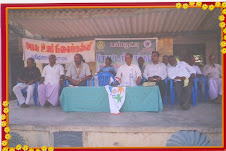Obesity in absolute terms is an increase of body fatty tissue mass. In a practical setting it is difficult to measure this directly, and obesity is typically measured by BMI (body mass index) and in terms of its distribution through waist circumference or waist-hip circumference ratio measurements. In addition, the presence of obesity needs to be evaluated in the context of other risk factors and co morbidities (other medical conditions that could influence risk of complications)
- An alternative way to determine obesity is to assess percent body fat. Doctors and scientists generally agree that men with more than 25% body fat and women with more than 30% body fat are obese. However, it is difficult to measure body fat precisely.
- The most accepted method has been to weigh a person underwater, but underwater weighing is a procedure limited to laboratories with special equipment.
- Two simpler methods for measuring body fat are the skin fold test, in which a pinch of skin is precisely measured to determine the thickness of the subcutaneous fat layer; or bioelectrical impedance analysis, usually only carried out at specialist clinics. Their routine use is discouraged.
- Mortality risk varies with BMI.
- The lowest risk is found at a BMI of 22-24 kg/m2 and increases with changes in either direction.
- A BMI of over 32 is associated with a doubling of risk of death.
- A large number of medical conditions have been associated with obesity. Health consequences are categorised as being the result of either increased fat mass (osteoarthritis, obstructive sleep apnoea, social stigma) or increased number of fat cells (diabetes, some forms of cancer, cardiovascular disease, non-alcoholic fatty liver disease). There are alterations in the body's response to insulin (insulin resistance), a pro inflammatory state and an increased tendency to thrombosis (prothrombotic state).
- Disease associations may be dependent or independent of the distribution of adipose tissue. Central obesity (male-type or waist-predominant obesity, characterised by a high waist-hip ratio), is an important risk factor for the metabolic syndrome, the clustering of a number of diseases and risk factors that heavily predispose for cardiovascular disease. These are diabetes mellitus type 2, high blood pressure, high blood cholesterol, and triglyceride levels (combined hyperlipidemia).
- Cardiovascular: congestive heart failure, enlarged heart and its associated arrhythmias and dizziness, varicose veins, and pulmonary embolism
- Endocrine: polycystic ovarian syndrome (PCOS), menstrual disorders, and infertility.
- Gastrointestinal: gastroesophageal reflux disease (GERD), fatty liver disease, cholelithiasis (gallstones), hernia, and colorectal cancer
- Renal and genitourinary: erectile dysfunction, urinary incontinence, chronic renal failure, hypogonadism (male), breast cancer (female), uterine cancer (female), stillbirth
- Integument (skin and appendages): stretch marks, acanthosis nigricans, lymphedema, cellulitis, carbuncles, intertrigo
- Musculoskeletal: hyperuricemia (which predisposes to gout), immobility, osteoarthritis, low back pain
- Neurologic: stroke, meralgia paresthetica, headache, carpal tunnel syndrome, dementia, idiopathic intracranial hypertension
- Respiratory: obstructive sleep apnoea, obesity hypoventilation syndrome, asthma
- Psychological: Depression, low self esteem, body dysmorphic disorder, social stigmatization
- An increasingly sedentary lifestyle plays a significant role in obesity.
- There has been a trend toward decreased physical activity due in part to increasingly mechanized forms of work,
- Changing modes of transportation, and increasing urbanization.
- Studies in children and adults have found an association between the number of hours of television watched and the prevalence of obesity.
- Driving one's children to school also decreases the amount of exercise that these children get and has led to calls for reduced car use around schools.
- An association between leisure time activity and obesity has been found.
 Like many other medical conditions, obesity is the result of interplay between genetic and environmental factors. Polymorphisms in various genes controlling appetite, metabolism, and adipokine release may predispose to obesity when sufficient calories are present. Obesity is a major feature in a number of rare genetic conditions: Prader-Willi syndrome, Bardet-Biedl syndrome, MOMO syndrome, leptin receptor mutations, melanocortin receptor mutations. In a people with early-onset severe obesity (defined by an onset before ten years of age and body mass index over three standard deviations above normal),
Like many other medical conditions, obesity is the result of interplay between genetic and environmental factors. Polymorphisms in various genes controlling appetite, metabolism, and adipokine release may predispose to obesity when sufficient calories are present. Obesity is a major feature in a number of rare genetic conditions: Prader-Willi syndrome, Bardet-Biedl syndrome, MOMO syndrome, leptin receptor mutations, melanocortin receptor mutations. In a people with early-onset severe obesity (defined by an onset before ten years of age and body mass index over three standard deviations above normal),- The correlation between social class and BMI is inconsistent. Comparing net worth with BMI found obese Americanians approximately half as wealthy as thin ones. When income differentials were factored out, the inequity persisted. A tendency to rely on fast food is seen as one of the reasons why this result occurred. Another study found women who married into a higher social class are thinner than women who married into a lower social class.
- Men from lower middle income households were less likely to be obese than were those in the highest income households and women from middle income households had the highest rates of obesity.
- Cessation of smoking verse continued smoking can leads to weight gain. A study found that those who quit smoking gained 4-5 kilograms over ten years. One sixth of the rise in obesity in North Americans can be attributed to falling rates of smoking.
- Eating less and exercising more.
- Diet programs -Healthy diet
- Anti-obesity drug






.jpg)